
Having happy customers is the “not so secret” formula to selling more, increasing your revenue, and making more profits… many statistics back this phrase up. I promise.
It all comes down to two things:
- Selling a great product and,
- Delivering an exceptional customer experience.
Assuming you have an incredible product… Then…this is when customer experience is what all that matters… and to be frank, your customer experience is part of your product. It’s not an isolated thing. You can’t serve the best dish and have the waiter be rude to your customers.
Customer experience is every interaction your customers have with your brand, from the moment they think about the problem that led them to find out about you to buying your product, using it, recommending it to others, or ditching it.
Sure, a lot of work goes into acquiring customers, But…….
- What happens after that?
- How do you keep them loyal, constantly thinking about you before anyone else?
- When it comes to your niche?
- What’s your best strategy to upsell and cross-sell to those customers?
- Sell them the same service on a recurrent basis?
- How to encourage them to refer you to your friends and family?
In this article, you will learn exciting and eye-opening customer experience and customer service statistics to help you make better decisions.
Let’s dive deep into it.
What are customer experience statistics?
Customer experience statistics are quantifiable data that provide insights into how customers perceive their interactions with a brand. They are critical as they offer valuable customer satisfaction, loyalty, and behavior information.
These statistics allow businesses to understand what works and what doesn’t in their customer service efforts, enabling them to make informed decisions to enhance the overall customer experience.
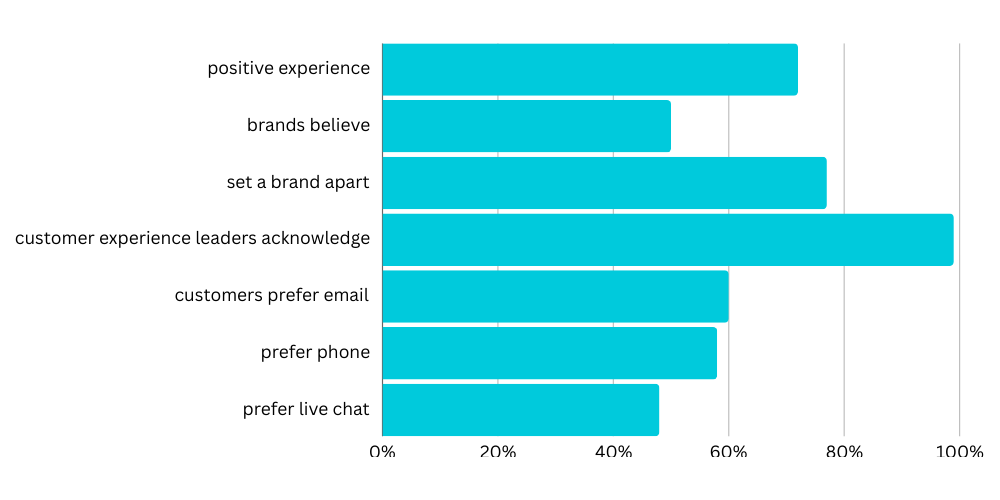
- According to research by Esteban Kolsky, 72% of customers will share a positive experience with six or more people. This highlights the immense power of word-of-mouth marketing and emphasizes the importance of delivering outstanding customer experiences.
- Conversely, over 50% of customers will switch to a competitor after just one unsatisfactory experience. This statistic underscores the need for businesses to consistently meet and exceed customer expectations to avoid losing them to competitors.
- Further emphasizing the importance of customer experience, 77% of brands believe that customer experience is a key competitive differentiator. In today’s highly competitive market, providing a superior customer experience can set a brand apart.
- Interestingly, 99% of customer experience leaders acknowledge the positive impact of focusing on customer experience. This statistic demonstrates that placing the customer at the center of a business strategy can lead to higher customer satisfaction and loyalty, ultimately driving business success.
- Customers’ preferred communication channels also play a significant role in their experience. For instance, 60% of customers prefer email, 58% prefer phone, and 48% prefer live chat.
Understanding these preferences can help businesses tailor their communication strategies to meet customers’ needs and preferences, enhancing the customer experience.
Moreover, customers are willing to pay more for a better experience. Research shows that 61% of consumers will spend at least 5% more if they know they’ll get a good customer experience.
These statistics underscore the growing importance of customer experience in today’s business landscape.
They highlight the need for businesses to understand and meet their customers’ needs, deliver positive experiences consistently, and make customer experience a key focus of their strategy. Companies can motivate customers, ease their journey, and foster long-term loyalty.
Importance of customer experience statistics
In the ever-evolving business landscape, one factor has consistently proven to be a key differentiator for companies seeking to gain a competitive edge: customer experience.
As businesses strive to meet and exceed customer expectations, understanding customer experience statistics becomes crucial.
These statistics offer valuable insights into customer interaction, customer support, and the overall perception of a product or service. They serve as a compass, guiding businesses towards delivering excellent customer service – a factor that consumers increasingly prioritize over price or product.
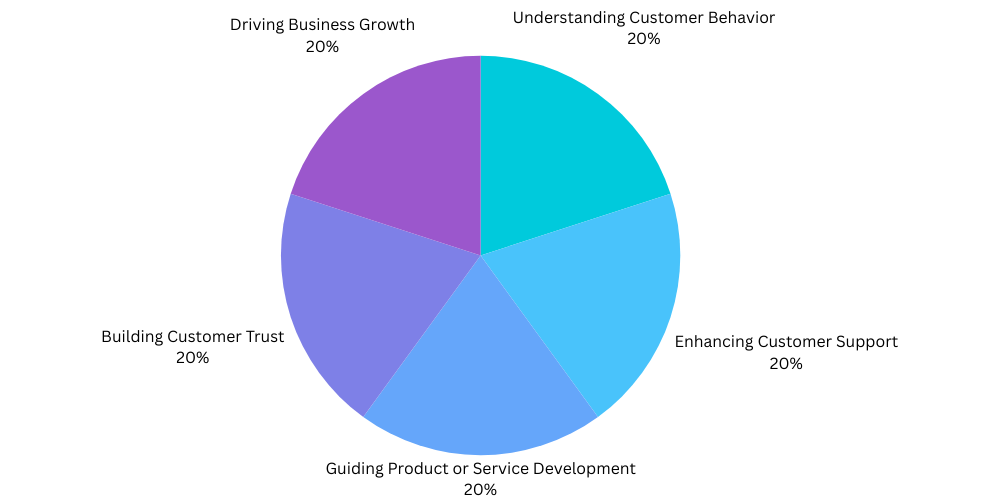
- Understanding Customer Behavior: Customer experience statistics explain how customers interact with a product or service. They reveal patterns and trends to help businesses tailor their offerings to meet customer needs and preferences.
- Enhancing Customer Support: These statistics shed light on the effectiveness of a company’s customer support initiatives. They can highlight areas of strength and identify opportunities for improvement, ensuring customers receive excellent customer service.
- Guiding Product or Service Development: By analyzing customer experience data, businesses can gain insights into what aspects of their product or service customers appreciate most and which areas need enhancement. This can guide development efforts and lead to more successful product launches.
- Building Customer Trust: A positive customer experience often increases customer loyalty. When customers believe a company values their feedback and works to improve their experience, it builds trust and encourages long-term relationships.
- Driving Business Growth: Ultimately, high-quality customer experiences translate into business success. Happy customers are more likely to recommend a product or service, leading to new customer acquisition and increased revenue.
Customer experience statistics play an integral role in shaping business strategies. They help businesses better understand their customers, deliver excellent customer service, and drive growth and success.
Let’s delve into the significant trends worth exploring.
1). Companies that focus on customer experience (CX) see an 80% increase in revenue (Zendesk).
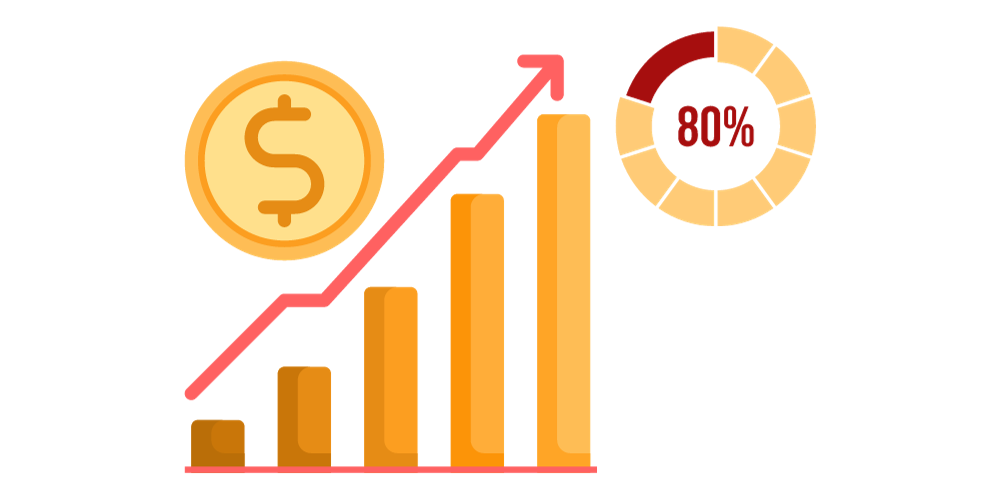
A strategic emphasis on customer experience (CX) can catalyze an exceptional increase in revenue by as much as 80%.
This authoritative statistic reveals the considerable potential of a customer-centric approach, where every interaction is meticulously crafted to surpass customer expectations and streamline their journey.
It’s not merely a strategy but a powerful growth engine, as satisfied customers are more likely to return and advocate for your brand. Investing in CX is tantamount to investing in your company’s future success, driving substantial revenue growth, and carving out a competitive advantage.
It’s about making the complex simple and motivating your customers to engage with your brand, thus saving time, maximizing potential, and increasing revenue.
2). 85% of brands believe they offer personalized customer experience, but only 60% of consumers agree (Emplifi).
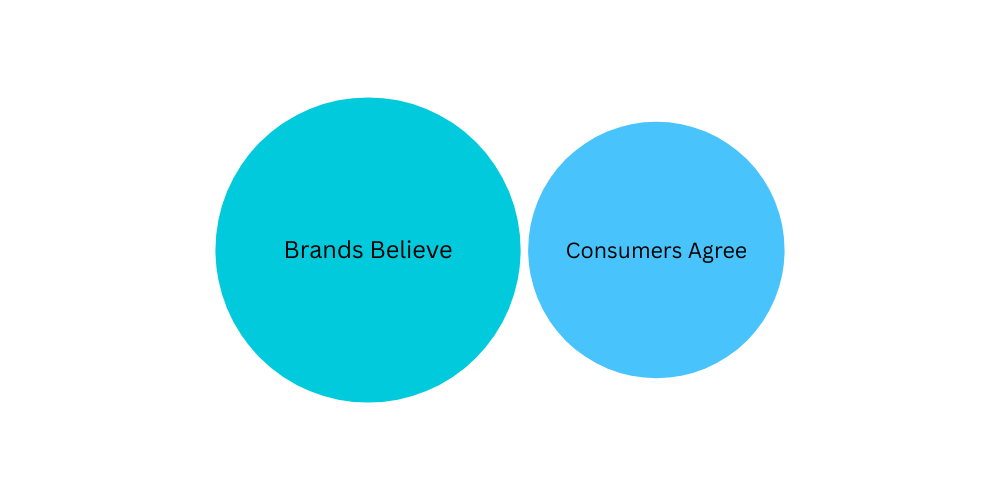
Personalized customer experience (CX) has emerged as a vital differentiator.
A staggering 85% of brands are confident that they provide a tailored CX, yet only 60% of consumers concur with this perspective. This stark discrepancy underscores the inherent challenge of crafting genuinely personalized experiences that resonate with customers.
Brands must leverage advanced software and tools to gain deeper insights into customer behavior, preferences, and needs. They can deliver customized interactions that meet and exceed customer expectations.
Comprehensive reviews, curated lists, exclusive advice, and step-by-step tutorials can guide businesses on this journey, making the process more manageable and motivating them to strive for excellence in CX.
This approach will ultimately save time, increase efficiency, and maximize the potential for creating a meaningful connection with their customers, thereby driving brand loyalty and growth.
3). Customers are 2.4 times more likely to stick with a brand when their problems are solved quickly (CMSWire).

According to CMSWire, customers are 2.4 times more likely to remain loyal to a brand that promptly addresses their concerns. This highlights the importance of businesses investing in efficient customer service mechanisms.
The right software and tools can streamline this process, making it easier for companies to quickly respond to and resolve customer issues, saving time and resources and significantly increasing the likelihood of retaining their customers.
This demonstrates the motivational power of acting with speed and efficiency in customer service, underlining that prompt action can profoundly impact a brand’s loyalty metrics.
4). 48% of customers already feel comfortable with interactions managed by bots (Hubspot).

A significant 48% of customers have expressed comfort with interactions managed by artificial intelligence or bots.
This statistic underlines a pivotal shift in customer perception and acceptance of AI-driven customer service tools.
Leveraging this technology can result in cost-effective, efficient, and round-the-clock customer support, improving customer satisfaction.
Businesses must understand this trend and adapt, integrating intelligent bots into their customer service strategy. Their service operations deliver prompt responses and ultimately save time and money while maximizing their potential to meet customer expectations.
5). Companies that excel at customer experience grow revenues 4%-8% above their market (Smith.ai).
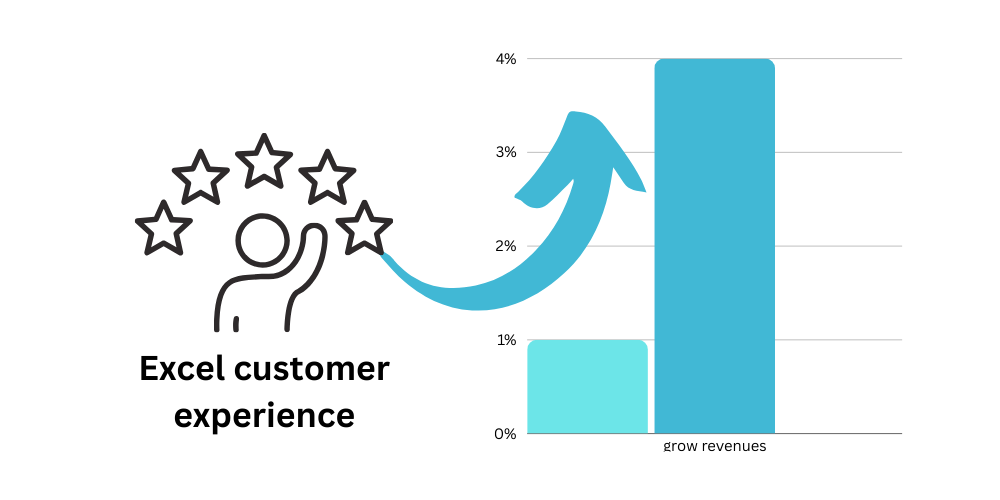
What distinguishes successful companies is their focus on delivering exceptional customer experiences.
According to an analysis by Bain & Company, businesses that prioritize and excel in providing superior customer experiences often achieve revenue growth rates of 4% to 8% above their respective markets.
This is primarily attributed to a superior customer experience leading to increased customer loyalty and satisfaction, fostering repeat business and positive word-of-mouth referrals.
Furthermore, companies with a customer-centric mindset are often more resilient, able to adapt quickly to market changes and meet evolving customer needs.
Thus, investing in customer experience is not just about delivering good service; it’s a strategic move that can significantly impact a company’s bottom line.
6). More than 60% of customers say they now have higher customer service standards (Lumoa).
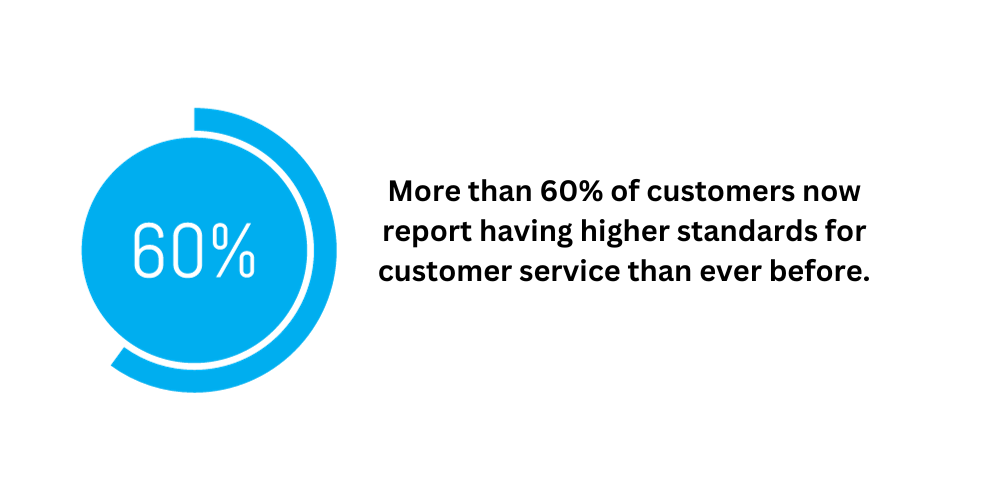
Customer service businesses are witnessing a substantial shift in consumer expectations. More than 60% of customers now report having higher standards for customer service than ever before.
This development is critically important for businesses to acknowledge and address. Here are some key facts to consider:
- Raising the Bar: With technological advancements and increased competition, consumers are becoming more discerning and demanding.
- Digital Preference: Many customers prefer digital channels for customer service, with live chat and social media gaining popularity for their speed and convenience.
- Swift Response: Customers increasingly expect quick responses to their queries or complaints. Any delay can lead to dissatisfaction and potential loss of business.
- Personalized Experience: Personalization is not just preferred but expected by many customers. Tailored recommendations and services enhance the customer experience and promote loyalty.
- Empowered Consumers: Today’s consumers are well-informed and have numerous options.
7). 40% of customers prefer self-service over human contact (Zippia).
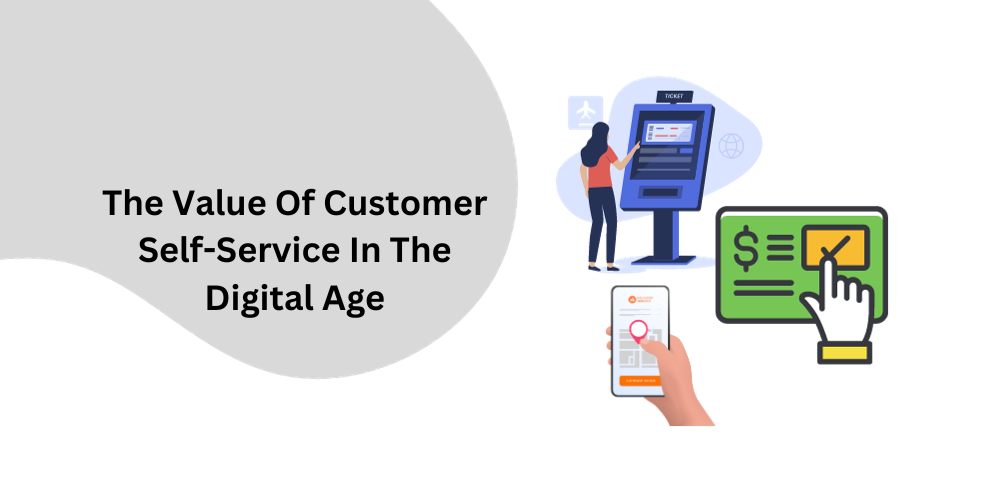
Customer preferences are shifting towards more autonomous methods of problem-solving. According to Zippia, 40% of customers prefer self-service over human contact.
This trend reflects a growing demand for efficient, immediate solutions that don’t require waiting on hold or navigating through complex customer service procedures.
Customers appreciate the convenience and speed of self-service options, which empower them to find answers or resolve issues at their own pace and on their schedule.
However, businesses must ensure their self-service platforms are user-friendly and practical, as half of consumers say they would rather have no self-service option than a poor one.
Companies must invest in developing robust, intuitive self-service systems to meet these evolving customer expectations and provide a satisfactory customer experience.
8). 92% of consumers trust positive reviews from other customers (Zippia).
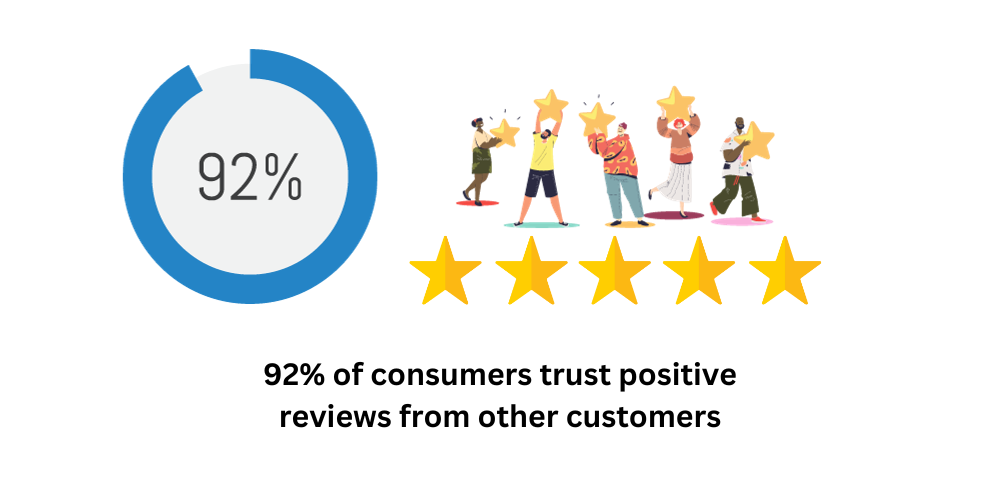
Customer reviews have become a decisive factor that can significantly impact a business’s reputation and success.
According to Zippia, a staggering 92% of consumers trust positive reviews from other customers. This statistic underlines the profound role of customer testimonials in shaping purchasing decisions and enhancing brand credibility.
Positive reviews serve as social proof, validating your products’ or services’ quality and reliability.
They provide prospective customers with real-world evidence of your offerings’ effectiveness, reducing perceived risk and fostering trust. It’s not just about accumulating positive reviews; businesses must also actively manage and respond to them, demonstrating their commitment to customer satisfaction.
Our advice?
Encourage your customers to share their experiences and use their feedback for continuous improvement.
9). 52% of consumers expect a response within one hour of contacting a company (CMSWire).
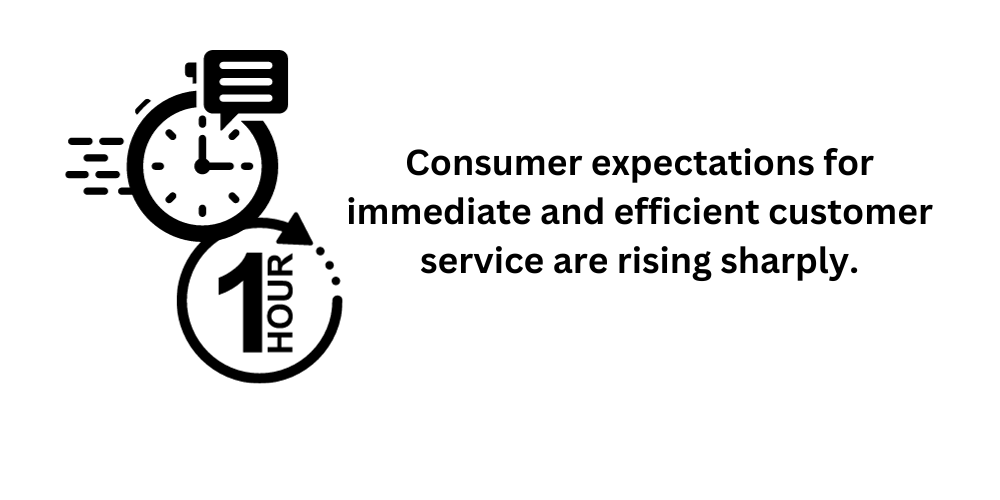
Consumer expectations for immediate and efficient customer service are rising sharply. According to CMSWire, 52% of consumers anticipate a response within just one hour of contacting a company.
This statistic underscores the urgent need for businesses to optimize their customer service operations to meet these high-speed demands. Quick response times are not just a courtesy but a critical factor in customer satisfaction and loyalty.
Delayed responses can lead to frustration, negative reviews, and potential loss of business. Thus, it is incumbent upon companies to invest in advanced customer service tools and strategies that enable rapid, effective response.
These may include AI-powered chatbots for instant replies, well-trained customer service teams capable of handling a high volume of queries, and efficient CRM systems that streamline communication.
In today’s digital era, time is of the essence, and your customer’s time is particularly precious.
10). Over half of customers have higher customer service expectations than a year ago (Lumoa).
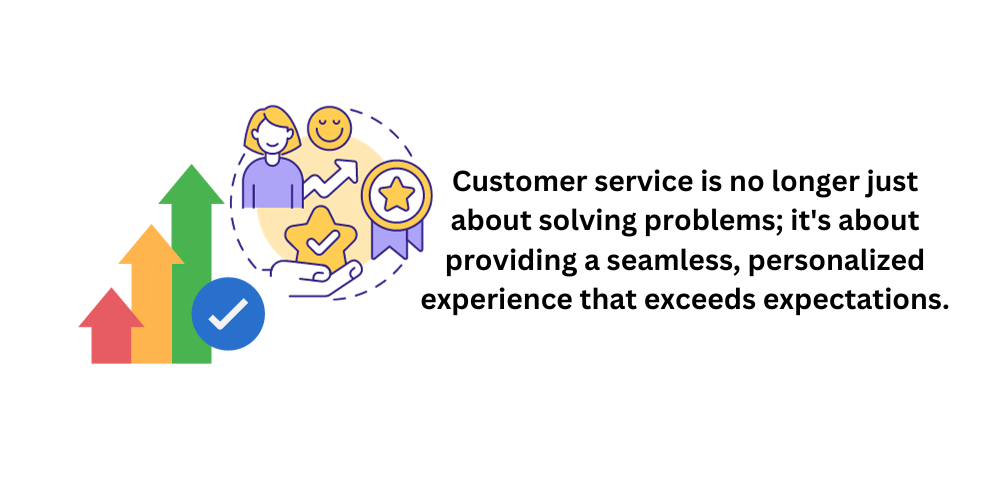
Customer expectations are continuously rising in today’s fast-paced and competitive business landscape. According to Lumoa, over 50% of customers now have higher expectations for customer service than just a year ago.
This statistic highlights the need for businesses to remain agile and adaptive in meeting evolving consumer demands. Customer service is no longer just about solving problems; it’s about providing a seamless, personalized experience that exceeds expectations.
Staying attuned to changing customer needs and consistently improving service quality, businesses can build robust and loyal customer relationships. Companies must prioritize investing in advanced technologies and strategies to stay ahead of the curve and deliver exceptional customer experiences.
11). Positive customer experiences lead to higher levels of customer loyalty (Zippia).
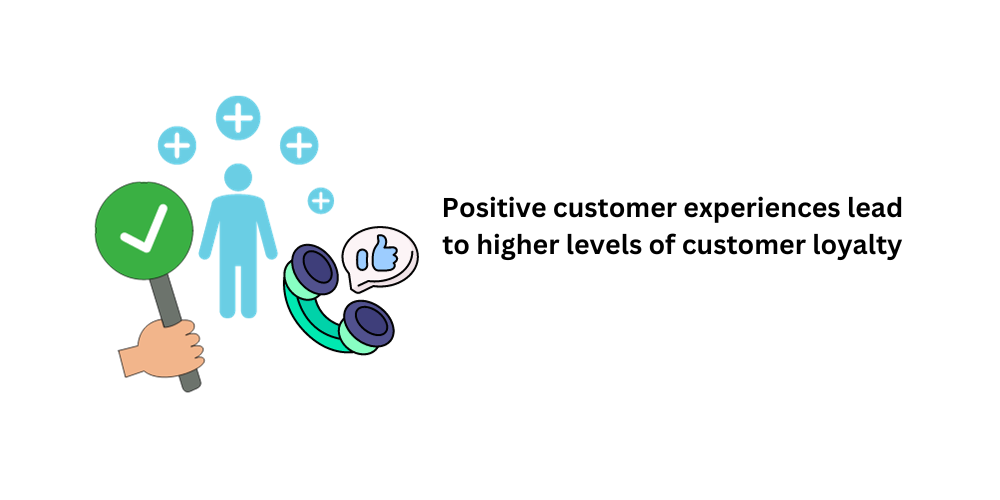
Zippia reports that positive experiences can lead to increased levels of customer loyalty.
When customers feel valued and satisfied with the service they receive, they are more likely to become repeat customers and even advocates for the brand.
This leads to increased revenue and helps attract new customers through positive word-of-mouth.
12). Companies that prioritize customer experience have higher customer retention rates (Zendesk).
According to Zendesk, companies prioritizing customer experience have higher customer retention rates.
Businesses can reduce churn and increase the lifetime value of their customers. This ultimately leads to improved profitability and sustainable growth.
Satisfied and loyal customers are more likely to forgive mistakes or issues
13). There is a significant gap between the personalized experiences businesses believe they provide and what consumers experience (Emplifi, Edume).
Delivering personalized customer experiences is no longer a luxury but a necessity.
Recent customer experience statistics highlight a significant gap between what businesses believe they provide and what consumers experience. Here are some top customer experience statistics you need to know in 2024.
According to a report by Emplifi, businesses are increasingly recognizing the importance of personalized customer experiences. Their efforts in this domain are bearing fruit, with many companies considering their customer interactions as highly personalized.
On the other hand, research from Edume presents a different picture from the consumer perspective. Despite businesses’ confidence in personalized services, only a fraction of consumers believe they receive a customized experience.
This discrepancy underscores the gap between businesses’ perceptions of their customer experience and the reality experienced by consumers.
This gap can have serious repercussions for businesses. As per a study by Zendesk, over 50% of customers will switch to a competitor after a single unsatisfactory customer experience.
Furthermore, SuperOffice states that 72% of customers will share a positive experience with 6 or more people, highlighting the importance of delivering an exceptional customer experience.
14). Companies excelling in customer experience are growing their revenues above their market (Smith.ai).
Companies that excel in customer experience are surpassing their market growth rates. This highlights the significant impact a strong focus on customer service and satisfaction can have on a business’s bottom line.
the customer experience, businesses can differentiate themselves from competitors and foster customer loyalty. This, in turn, leads to increased sales and revenue growth.
As these customer-centric companies continue to prioritize the needs of their customers and evolve with changing market demands, they are better equipped for long-term success and sustainable growth (Forbes).
15). More companies are beginning to understand the importance of customer experience in their growth (Forbes).
Forbes reports that more companies are recognizing the role of customer experience in their growth and success.
This shift towards prioritizing customer experience can be attributed to the changing expectations of consumers, who now have many options at their fingertips.
To stand out in such a competitive landscape, businesses must go beyond traditional marketing tactics and focus on delivering exceptional customer experiences.
This means investing in customer service, creating a user-friendly website, and constantly gathering feedback to improve the overall experience.
16). Technology has revolutionized the customer experience for many businesses (Harvard Business Review).
Technology has played a significant role in transforming the customer experience for businesses. With the rise of e-commerce and digital platforms, customers have more control and convenience when interacting with companies.
Technology allows businesses to provide customers with a more efficient and customized experience, from chatbots to personalized marketing.
Data and analytics have also enabled companies to gain insights into consumer behavior, allowing them to tailor their products and services accordingly.
In today’s digital age, businesses that embrace technology in their customer experience strategies can stay ahead of the curve and meet the constantly evolving needs of their customers.
17). The impact of excellent customer experience extends beyond just the customer-business relationship (Forbes).
Great customer experience doesn’t just benefit the customer-business relationship; it also positively impacts other aspects of a company’s operations.
Forbes reports that businesses with higher customer satisfaction rates also see employee engagement and retention improvements. This is because when employees feel empowered to deliver exceptional experiences, they feel more connected to the company’s mission and values.
Moreover, satisfied customers are more likely to provide positive feedback and referrals, which can attract top talent and boost a company’s reputation in the industry.
By prioritizing customer experience, businesses can create a ripple effect that leads to overall growth and success. Overall, it is clear that investing in customer experience not only benefits customers but also has a significant impact on a company’s bottom line.
18). Customers who report positive emotions towards a brand are likelier to be loyal (Lumoa).
According to a study by Lumoa, customers who report positive emotions towards a brand are 3.5 times more likely to be loyal than those who don’t. This highlights the critical role that emotional connections play in building customer loyalty.
Businesses can create positive emotional experiences for their customers through personalized interactions, exceptional service, and effectively addressing their needs and concerns. Companies can establish a deeper connection with their customers by creating positive emotions and building long-lasting relationships.
Moreover, emotional connections with a brand also lead to higher satisfaction rates and increased customer lifetime value. With the emotional relationships in their customer experience strategies, businesses can see significant improvements in customer loyalty and retention.
19). Businesses can improve customer loyalty by offering rewards and incentives (Lumoa).
Customers who feel valued by a company are 6 times more likely to recommend it to others. By offering rewards and incentives to loyal customers, businesses can show their appreciation and build stronger relationships with them.
This leads to increased customer satisfaction and encourages repeat purchases and positive word-of-mouth marketing.
Furthermore, loyalty programs provide valuable customer preferences and behavior data, allowing businesses to personalize their offerings and enhance the overall customer experience. Loyalty through rewards and incentives, companies can create a loyal customer base likely to stay with them for the long term.
Incorporating customer loyalty programs into marketing strategies can significantly benefit both customers and businesses.
20). Consistent branding and messaging across all touchpoints can improve customer loyalty (Zippia).
According to a survey by Zippia, 82% of consumers are likelier to be loyal to a brand with consistent branding and messaging across all touchpoints. This highlights the importance of creating a cohesive brand image and message for businesses looking to build customer loyalty.
Consistency in branding and messaging helps customers recognize and remember a brand and creates a sense of reliability and trust. Businesses can reinforce their brand image and values in customers’ minds by delivering consistent messages across all customer touchpoints, such as social media, websites, and advertising. This leads to increased loyalty and encourages repeat purchases from satisfied customers.
21). Most customers are willing to pay more for a better customer experience (Salesforce).
As per a survey conducted by Salesforce, a staggering 64% of customers exhibit a willingness to pay a premium for a remarkable customer experience. This statistic serves as a testament to the fact that customers place immense value on receiving top-notch service and are prepared to make a financial investment to attain it.
By providing an exceptional customer experience, businesses can increase customer satisfaction and retention and potentially generate higher revenue from loyal customers willing to spend more on their products or services.
This emphasizes the importance of continuously improving and investing in customer experience strategies to meet evolving customer expectations.
22). Businesses must focus on providing consistent experiences across all channels (Forbes).
As per Forbes, a significant 60% of customers anticipate a seamless and uniform experience across all contact channels when engaging with a brand.
Businesses must prioritize consistency in communication, branding, and service delivery to meet customer expectations and build trust.
By providing a seamless and cohesive experience across all channels, businesses can ensure that their customers receive consistent quality service no matter how they interact with the brand.
23). The use of chatbots for customer service is rising (Hubspot).
The use of chatbots for customer service is becoming increasingly popular among businesses. According to a report by Hubspot, 80% of companies plan to use chatbots in some form by 2021.
This indicates a growing trend towards self-service options and automation in the customer service industry.
Businesses can save time and resources by incorporating chatbots into their customer service strategies while providing efficient and effective customer support. Chatbots can handle simple inquiries and tasks, allowing human agents to focus on more complex issues.
This improves the overall customer experience and allows businesses to scale their customer service capabilities as they grow.
24). Customers who feel appreciated, confident, and understood are more likely to be loyal to a brand (Lumoa).
According to Lumoa, customers who feel appreciated (60%), confident (58%), and understood (54%) are more likely to be loyal to a brand.
This highlights the importance of building strong emotional connections with customers through personalized and attentive service.
Understand and meet each customer’s unique needs and preferences, businesses can make them feel valued and important. This can increase customer satisfaction, loyalty, and positive word-of-mouth recommendations. In contrast, customers who feel unappreciated or misunderstood are likelier to switch to a competitor.
25). Businesses must proactively gather and analyze customer feedback to improve their service (Qualtrics).
According to Qualtrics, 95% of dissatisfied customers will never complain to a business directly. This highlights the importance of actively seeking customer feedback to identify and address any issues or areas for improvement. By gathering and analyzing customer feedback, businesses can make data-driven decisions to continually improve their service and meet customer expectations.
26). Businesses must prioritize speed and efficiency in customer service processes (Forrester).
According to a report by Forrester, 77% of customers say that valuing their time is what a business can do to provide good service. This highlights the importance of speed and efficiency in the customer service process.
The most important Minimizing wait times, and providing timely and effective solutions, businesses can show customers that their time is valued and demonstrate their commitment to providing excellent service. This can lead to increased satisfaction and loyalty from customers.
27). To stay competitive, businesses must adapt to shifting consumer preferences and expectations (Salesforce).
With the rise of e-commerce and the increasing use of technology, consumers’ preferences and expectations are constantly evolving. This means that businesses must be willing to adapt and evolve their customer service strategies to stay competitive in the market.*
By staying up-to-date with changing trends and technologies, businesses can meet the needs and expectations of their customers and maintain a competitive edge. This may include implementing new communication channels, offering personalized experiences, or investing in automation and self-service options.
28). Businesses must build long-term customer relationships instead of short-term transactions (HubSpot).
80% of a company’s future revenue will come from just 20% of its existing customers. This highlights the importance of building and maintaining solid customer relationships to secure loyalty and repeat business.
By prioritizing customer retention, businesses can increase lifetime value and reduce the cost of acquiring new customers. This may involve personalized interactions, ongoing communication, and offering rewards or incentives for loyal customers.
29). Investing in customer experience can lead to a higher return on investment (ROI) than traditional marketing tactics (Qualtrics).
According to a Qualtrics study, companies prioritizing customer experience see a 14% higher ROI than those focusing on traditional marketing efforts. This highlights the effectiveness of investing in customer experience to drive business growth and success.
By shifting focus from solely marketing to creating a positive customer experience, businesses can attract new customers and retain and engage existing ones. This can ultimately lead to increased sales, brand loyalty, and long-term success for the company.
30). Buyers are willing to pay more for a great customer experience.
86% of buyers are willing to pay more for a great customer experience. (PWC)
The more expensive the item, the more they are willing to pay. Customers are willing to pay a premium of up to 13% (and as high as 18%) for luxury and indulgence services simply by receiving a great customer experience.
49% of buyers have made impulse purchases after receiving a more personalized experience. (Segment)
31). Companies that invest in customer experience make more money and save on costs.
According to the Temkin Group, companies earning $1 billion annually can expect an average of $700 million more within 3 years of investing in customer experience.
SaaS companies can expect to increase revenue by $1 billion by investing in customer experience. (Mckinsey)
The top 10 most empathetic companies increased their financial value more than twice the bottom 10 companies [Harvard Business Review]
Offering high-quality customer experience can lower the cost of serving customers by up to 33% [Deliotte]
32). Customer experience is becoming the competitive advantage compared to price and product.
A Walker study found that at the end of 2020, customer experience will overtake price and product as the key brand differentiator.
88% of companies now prioritize customer experience in their contact centers. (Deloitte)
More than two-thirds of companies now compete primarily based on customer experience – up from only 36% in 2010! (Gartner)
84% of people believe that the experience provided by a business is equally important as the product or service they offer. (Source: Full story)
70% of enterprise CEOs consider UX & CX as a competitive differentiator. (CMS Wire)
78.5% of surveyed CMOs in the UK, France, and Germany believe that an excellent customer experience provides a significant competitive advantage. (Martech Alliance)
33). Happy customers will advocate and develop brand loyalty…
72% of customers will share a positive experience with 6 or more people. (Esteban Kolsky)
3 out of 5 consumers say customer service is vital for brand loyalty. [Zendesk]
78% of consumers will do business with a company again, even after a mistake, if customer service is excellent. [Salesforce]
Consumers who rate a company’s service as ‘good’ are 38% more likely to recommend that company. [Qualtrics]
93% of customers are more likely to make repeat purchases with companies that offer excellent customer service. [HubSpot]
34). … and unhappy customers will leave to the competition
Customers tend to share their negative experiences more than positive ones. On average, customers tell 9 people about a positive experience with a brand and 16 people about a negative experience [Deliotte]
Only 1 in 26 unhappy customers complain. (Esteban Kolsky)
13% of unhappy customers will share their experience with 15 or more people. (Esteban Kolsky)
76% of people would switch to a competitor if they have just one bad experience. (Source: PwC)
50% of customers would switch to a new brand after a bad customer service experience. [Zendesk]
80% of consumers would instead do business with a competitor after multiple bad experiences. [Zendesk]
Customers are four times more likely to switch to a competitor if the problem they’re having is customer service-based. [Bain and Co]
35). Employee engagement has a positive spin on the customer experience.
Companies that prioritize customer experience have 1.5 times more engaged employees than companies that don’t
Companies with engaged employees outperform their competitors by 147% and 59% of companies with a customer-focused CEO report higher revenue growth, compared to 40% of companies without [Genesys]
Self-service and digital customer experience is a priority… Both for mobile and website
36). Mobile customer experience is a priority.
57% of customers would not recommend a business with a poorly designed website on mobile. (SocPub)
50% of customers would stop visiting a website that is not mobile-friendly, even if they like the business. (SocPub)
59% of all internet traffic worldwide now comes from mobile. (Statista)
84% of companies who claim to be customer-centric are now focusing on the mobile customer experience. (Source)
Poor mobile customer support is a common issue: 90% of customers report having a poor experience seeking customer support on mobile devices, with navigation (90%), site search (75%), and load times (40%) being the most common complaints (SuperOffice).
37). Omnichannel experience is a no-brainer for business growth.
The number of companies investing in the omnichannel experience has increased from 20% to more than 80%. (PWC)
Companies with the most robust omnichannel customer engagement strategies enjoy a 10% year-on-year growth, a 10% increase in average order value, and a 25% increase in close rates. (Adobe)
74% of customers have used multiple channels to start and complete a transaction (Salesforce). 76% of customers expect consistent interactions across departments, but 54% feel teams don’t share information internally (Salesforce).
73% of brands are unable to provide a consistent experience across their different digital channels. (Source)
38). Customers prefer self-service
Currently, 67% of customers prefer self-service over speaking to a company representative. [Zendesk]
91% of customers would use an online knowledge base if it were available and tailored to their needs. [HubSpot]
Gartner predicts that by 2030, customer-owned bots will automatically raise a billion service tickets. [Gartner]
Three years ago, 25% of customer interactions were automated through AI and machine learning. However, this number is expected to grow to 40% by 2023. [Gartner]
Customers have high expectations when it comes to customer experience.
39). Proactive communication is the key to customer satisfaction.
Over 85% of customers prefer proactive communication and contact from businesses. (Gartner)
40). Customers expect fast turnaround and immediate attention.
Although customers expect immediate attention, the average response time for customer service emails is 12 hours. [HubSpot]
41). Customers don’t feel understood by brands.
53% of consumers feel that brands fail to meet their experience standards (Acquia).
66% of customers expect companies to understand their unique needs and expectations, but 66% feel they’re generally treated like numbers (Salesforce).
31.5% of companies feel that they exceed customer expectations, while 17.5% believe that the customer experience they offer meets customer needs. (Martech Alliance)
42). … and companies know that they are falling short
48% of companies feel that they fail to meet customer expectations in terms of customer experience. (Martech Alliance)
Challenges to delivering a great customer experience and tools that could help
43). Barriers include the lack of technology, data, and knowledge… contribute to
The main barriers to providing a great customer experience are a lack of tech and data skills and knowledge (53%) and inadequate tech solutions (43%). (Martech Alliance)
44). … and so does the lack of leadership
54% of U.K. brands rely on their CMO to set the CX vision for their organization. (Acquia)
44% of UK brands report a talent shortage in brand leadership, and 23% are uncertain about where to begin with CX technology.
45). Low budget allocation and investment priorities
One-third of companies that considered CX investment areas low priority before the COVID-19 pandemic now plan to spend more on them. (Martech Alliance)
Fashion sites have the highest proportion of mobile abandonment at 63.03%.
46). Customer journey mapping has a positive impact on the customer experience.
88% of companies report that customer mapping had a positive impact on their ability to deliver personalized CX [eConsultancy]
Customers have a high expectation for immediate and efficient service.
47). Seeking prompt solutions and responses to their needs.
Customer service emails have an average response time of 12 hours, which can lead to a disconnect [superoffice]
A delayed reply reduces customer engagement and may cause customers to stop contacting you, leading to their departure. Customers have the right to be demanding as they are vital to your business. Prompt assistance is their primary concern. Prioritize efficient customer support for better engagement and satisfaction.
48). Predicting the needs of customers is a valuable skill to possess.
Most customers, precisely over 85%, have expressed their desire for proactive communication and contact from businesses. This indicates the importance of actively reaching out to customers and staying ahead in providing exceptional customer service.
49). Eliminating data silos is crucial for enhancing data integration and collaboration.
According to Gartner, by 2023, customer interactions automated through AI and machine learning are expected to increase from 25% to 40%. This highlights businesses’ need for a unified data system for seamless integration and collaboration among different departments.
Data silos can hinder customer service teams from accessing relevant information, leading to delays in providing accurate and timely solutions. Businesses need to invest in technology solutions that promote data integration and break down silos, ultimately improving the customer experience.
More than 95% of CX leaders have either invested in or plan to invest in technologies related to data integration, data integrity, or data enrichment, according to a report by CX Today. These investments highlight the growing importance of customer data strategies in delivering exceptional customer experiences. Find out more here.
According to the Zendesk CX Trends Report 2023, 72% of leaders think consolidating teams and responsibilities focused on customer experience will improve operational efficiencies.
According to the Zendesk CX Trends Report 2023, 74% of agents believe that access to a broader range of tools and data can seize more opportunities to personalize interactions.
According to a report by Treasure Data, 54% of organizations identified fragmented or siloed data as their primary obstacle to effectively utilizing data.
50). The power of personalization in customer experience
66% of customers expect companies to understand their unique needs and expectations, but 66% feel they’re generally treated like numbers [Salesforce]. This reflects the need for businesses to prioritize personalization in their customer experience strategies.
Personalized experiences can improve customer retention, with 80% of customers stating they are likelier to do business with a company that offers customized experiences [Epsilon]. This highlights personalization’s impact on customer loyalty and overall satisfaction.
72% of customers are more likely to buy from a business that offers personalized experiences, according to SmarterHQ. By understanding their preferences and behavior patterns, companies can deliver targeted and relevant experiences that resonate with customers.
Personalization can also lead to increased revenue, with 44% of customers stating they will likely become repeat buyers after a personalized shopping experience [Infosys]. Businesses can drive sales and improve their bottom line by creating a more tailored and meaningful customer experience.
Delivering exceptional customer experience leads to higher satisfaction levels.
According to PwC, 73% of customers state that CX plays a significant role in purchasing decisions.
51). The cost of a poor customer experience can be significant.
A study by NewVoiceMedia found that businesses in the United States lose an estimated $62 billion per year due to poor customer service.
Furthermore, a satisfied customer will share their positive experience with 9 people on average, while an unsatisfied customer will share their negative experience with 16 people on average [American Express]. This highlights the significant impact a single customer’s experience can have on a business’s reputation and potential future sales.
52). It provides you with a competitive edge.
In today’s highly competitive market, delivering exceptional customer experience can set businesses apart. According to Walker, by 2020, CX will overtake price and product as the key brand differentiator.
Customers are willing to pay more for a better experience, with 86% stating they are willing to pay more for a great customer experience [Oracle]. This highlights the potential financial benefits of investing in CX strategies prioritizing exceptional customer experiences.
53). A subpar customer experience increases the likelihood of risks.
A poor customer experience can also lead to negative reviews, decreasing brand reputation and trust. In today’s digital age, where online reviews and word-of-mouth play a significant role in consumer decision-making, businesses must prioritize CX.
On the other hand, delivering exceptional customer experience can lead to positive reviews and recommendations, creating a virtuous cycle that can attract new customers and boost sales. It also makes loyal customers likelier to continue doing business with the brand.
54). All retail indicators converge on one central theme: the paramount importance of customer experience.
According to Deloitte, 62% of retailers view customer experience as a competitive differentiator.
Retailers who prioritize CX see higher revenue growth, with a 5.1% increase in sales compared to retailers who do not prioritize CX [Retail Systems Research].
Customer experience also affects customer loyalty, with 78% of retail customers stating that they will stay loyal to a brand that offers consistent and personalized experiences [Salesforce].
55). Strategies genuinely effective in today’s interconnected world encompass multiple channels seamlessly.
A great CX strategy should not be limited to a single channel but should encompass all media that customers interact with the brand online and offline.
According to Forrester, 60% of consumers prefer a seamless, integrated experience across all channels.
By providing a consistent and cohesive experience across all touchpoints, businesses can create a more engaging and satisfying customer experience, increasing loyalty and sales.
56). Employee retention and customer experience (CX) go hand in hand.
Employee satisfaction and engagement play a significant role in delivering exceptional customer experience. According to Qualtrics, there is a direct correlation between employee satisfaction and CX scores.
Happy and engaged employees are likelier to go above and beyond for customers, increasing satisfaction and loyalty.
On the other hand, unhappy employees can lead to a poor customer experience, resulting in dissatisfied customers and potential loss of business.
57). High employee turnover has a significant impact on the overall customer experience.
Retailers with high employee turnover are more likely to struggle with providing a consistent and personalized customer experience.
According to SHRM, every time a business replaces a salaried employee, it costs an average of 6 to 9 months’ salary. This financial impact can hinder a business’s ability to invest in CX strategies.
High employee turnover also affects employees’ knowledge and expertise, which can directly impact the quality of customer service they provide.
58). Enhancing customer experience (CX) positively impacts employee experience (EX).
Investing in CX strategies leads to better customer satisfaction and creates a positive work environment for employees.
According to Gallup, companies with engaged employees outperform those without by 10% on customer ratings. This highlights the clear link between CX and EX.
By prioritizing CX, businesses can improve employee morale, job satisfaction, and retention rates. This creates a positive cycle where happy employees provide better customer experiences, leading to increased business success.
59). Customer experience maturity refers to sophistication and effectiveness in managing and delivering exceptional customer experiences.
Businesses can achieve a higher level of CX maturity by consistently investing in and improving CX strategies.
According to Gartner, there are four levels of CX maturity: novice, operational, advanced, and leading.
50). Data privacy and customer protection are crucial aspects in today’s digital landscape.
Customers expect their personal information to be protected and secure when interacting with businesses. Failure to do so can lead to a loss of trust and potential legal repercussions.
Businesses can build trust with customers by prioritizing data privacy and protection, leading to increased loyalty and positive word-of-mouth recommendations.
Implementing CX strategies prioritizing customer data privacy also aligns with increasing regulations and laws surrounding data protection, such as the General Data Protection Regulation (GDPR) in Europe.
51). Omnichannel and multichannel strategies are two approaches businesses use to engage with customers across various platforms and touchpoints.
Multichannel strategies involve using multiple channels to interact with customers, such as in-store, online, and social media.
On the other hand, omnichannel strategies take a more integrated approach, seamlessly merging all channels for a consistent and personalized customer experience.
According to Salesforce, businesses that implement omnichannel strategies see an average increase of 10% in customer retention and a 25% increase in sales. This highlights the effectiveness and importance of omnichannel CX strategies in today’s market.
52). Staying ahead of the ever-evolving digital landscape is crucial for social marketing leaders passionate about driving brand awareness and engagement.
As technology and social media platforms evolve, businesses must stay ahead of the game and adapt their marketing strategies accordingly.
By staying informed and up-to-date on industry trends and changes, businesses can ensure that they effectively reach and engage with customers in the most relevant and impactful ways.
This also allows businesses to be proactive in their approach and stay ahead of potential challenges or issues that may arise.
53). This exclusive opportunity is targeted toward commerce leaders and offers invaluable insights, strategies, and resources to drive growth and success in the ever-evolving business landscape.
The world of commerce constantly evolves, with new technologies and consumer behaviors always emerging.
This opportunity gives leaders a unique chance to gain valuable insights and strategies to navigate these changes successfully and drive business growth.
54). This is specifically for customer care leaders responsible for managing and supervising teams, delivering exceptional customer service, and driving customer satisfaction.
Customer care leaders are crucial in creating and maintaining a positive customer experience.
This opportunity gives them the resources and strategies to effectively manage their teams and provide exceptional customer service, ultimately increasing customer satisfaction and loyalty.
55). Social Marketing Cloud is a comprehensive platform that empowers businesses to manage their social media marketing strategies effectively.
With the rise of social media as a primary platform for marketing and engagement, businesses need efficient tools to manage their strategies.
Social Marketing Cloud offers a comprehensive solution that allows businesses to streamline their social media efforts and effectively reach and engage with their target audience.
This platform provides a wide range of features, such as scheduling posts, analyzing performance data, and managing multiple social media accounts, making it an invaluable tool for any business looking to succeed in social media marketing.
56). Social commerce cloud is a robust platform that combines social media and e-commerce, enabling businesses to leverage the reach and engagement of social networks to drive sales and grow their online presence.
With the increasing popularity of social media as a marketplace, businesses need to integrate e-commerce capabilities into their social media strategies.
Social Commerce Cloud offers a seamless solution, allowing businesses to sell directly through popular social media platforms and reach potential customers on a larger scale.
This platform also offers features such as personalized product recommendations and easy checkout processes, making it an effective tool for driving sales and growing a business’s online presence through social media.
Companies encounter tremendous challenges in today’s business landscape.
57). Positive experiences make loyal customers:
Companies face many challenges in today’s competitive market, such as staying ahead of industry trends, managing customer data privacy, and effectively utilizing social media.
However, one way to overcome these challenges is by prioritizing positive customer experiences.
With exceptional customer experiences, businesses can create a loyal customer base that will continue to support and recommend their brand.
58). Customer experience (CX) is crucial in cultivating greater productivity and success.
Customer experience is not just about providing good service; it encompasses every touchpoint a customer has with a business.
Businesses can create a positive and seamless journey for their customers, increasing productivity and success.
This includes everything from user-friendly website navigation to personalized interactions with customer care teams.
59). Consistency plays a pivotal role in delivering exceptional customer experiences.
Providing exceptional customer care strengthens the bond between businesses and their customers.
Consistency is key to providing exceptional customer experiences.
By delivering consistent and high-quality services, businesses can build trust with their customers and strengthen the bond between them.
This, in turn, leads to increased customer satisfaction, loyalty, and advocacy for the brand.
60). Artificial intelligence and emerging technologies.
Consistency is key to delivering exceptional customer experiences.
Businesses can build trust and strengthen customer relationships by maintaining consistency across all touchpoints and channels.
This also helps create a cohesive brand image and ensures consistent quality for each interaction with the customer.
61). Customers expect to be served by knowledgeable individuals who deeply understand the subject matter.
In today’s fast-paced and information-driven world, customers have high expectations when receiving business assistance.
They expect to be served by knowledgeable individuals who deeply understand the subject matter.
Businesses must invest in educating and training their customer care teams to provide accurate and helpful information, ultimately leading to better customer experiences and satisfaction.
62). Implement effective team organization to enhance customer experience (CX).
A well-organized team is essential in providing exceptional customer experiences.
With team organization strategies, businesses can ensure they have the necessary resources and support to deliver excellent customer service.
This includes clear communication channels, efficient workflows, and training for all team members.
63). Discover the most up-to-date customer statistics available.
Keeping up with customer statistics is crucial for businesses looking to stay ahead in their market.
According to a survey by PWC, 73% of consumers consider the experience an essential factor when purchasing from a brand.
42% of customers are willing to pay more for a friendly, welcoming experience, while only 17% would do so for a product or service [American Express].
64). Customer Experience metrics are key performance indicators that organizations use to measure customer interactions and experiences with their products or services.
Customer experience metrics are crucial in determining the success of a business’s customer experience strategy.
Some standard CX metrics include Net Promoter Score (NPS), Customer Satisfaction (CSAT), and Customer Effort Score (CES).
These metrics can provide valuable insights into customer satisfaction, loyalty, and retention levels, allowing businesses to make data-driven decisions to improve customer experience.
65). Discover the art of gauging customer satisfaction through effective measurement techniques.
Measuring customer satisfaction is a crucial aspect of maintaining a successful business.
Businesses can use various techniques such as surveys, feedback forms, and social media listening to gather insights into their customers’ level of satisfaction.
It’s essential to regularly review these metrics and make necessary improvements to ensure continued customer satisfaction and loyalty. Effective measurement techniques allow businesses to consistently monitor and improve their customer experience.
Businesses can also track metrics such as repeat purchases, referral rates, and churn rates to gauge overall customer satisfaction and loyalty.
66). All retail indicators converge on one central theme: the paramount importance of customer experience.
According to Deloitte, 62% of retailers view customer experience as a competitive differentiator.
Retailers who prioritize CX see higher revenue growth, with a 5.1% increase in sales compared to retailers who do not prioritize CX [Retail Systems Research].
Customer experience also affects customer loyalty, with 78% of retail customers stating that they will stay loyal to a brand that offers consistent and personalized experiences [Salesforce].
67). The Net Promoter Score (NPS) is a customer satisfaction metric businesses use to measure and evaluate customer loyalty.
The NPS is calculated by asking customers: “How likely are you to recommend our product/service to others?”
Customers can respond on a scale of 0-10, with 9-10 promoters, 7-8 passive, and 0-6 detractors.
The NPS is then calculated by [subtracting the percentage of detractors from the percentage of promoters Satmetrix].
A higher NPS indicates high customer satisfaction and loyalty, making it an important metric for businesses to track and improve upon.
68). Customer effort score (CES) is a metric used to measure the ease of doing business with a company.
CES is typically measured through a survey asking customers how easy or difficult it was to solve their issue with the company’s product or service.
Customers rate their experience on a scale of 1-7, with 1 being difficult and 7 being easy.
Like NPS, the CES score is calculated[ by subtracting the percentage of customers who had a difficult experience from those who had an easy one [Gartner].
A lower CES score indicates that customers found it easy to do business with the company, which can lead to higher customer satisfaction and loyalty.
Businesses can identify areas of improvement to make the customer experience more effortless and enjoyable for their customers. Overall, CES is a valuable metric for companies to measure and improve upon as it directly correlates with customer satisfaction and loyalty.
69). According to a report by Calabrio, a negative contact center experience has led to brand-switching for 60% of consumers.
This statistic emphasizes the critical role that contact centers play in delivering a positive customer experience.
To ensure a seamless and efficient contact center operation, businesses can invest in advanced technologies such as artificial intelligence (AI), chatbots, and speech analytics.
These tools can help improve response times, personalize interactions, and gather insights to continuously enhance the customer experience.
70). A direct correlation exists between customer service and performance, with 70% of brands acknowledging this connection. Zendesk
This demonstrates the significant impact that customer service has on a business’s overall success. Companies can increase customer satisfaction and loyalty, leading to higher revenue and better brand reputation.
Satisfied customers are likelier to leave positive reviews, refer friends and family, and become long-term loyal customers. Businesses must continuously invest in their customer service efforts to maintain a competitive edge and drive growth.
71). A staggering 87% of customers consciously refrain from purchasing from brands they lack trust in. (Sinch)
This statistic highlights the importance of building trust with customers. A strong customer experience strategy that prioritizes transparent and authentic communication can help foster trust between a business and its customers.
By addressing concerns and being honest about products or services, businesses can build a loyal customer base that trusts their brand.
72). Enhancing content and knowledge delivery for customers and employees is deemed necessary by 74% of CX leaders. (Gartner)
The importance of providing relevant and accurate information to both customers and employees. By investing in technologies that streamline content and knowledge delivery, businesses can ensure a consistent experience across all touchpoints.
This can lead to improved customer satisfaction, loyalty, and employee performance.
74). 81% of customers say a positive customer service experience increases their chances of making another purchase. (Zendesk)
Businesses must prioritize delivering exceptional customer service to retain existing customers and attract new ones.
A positive experience can increase customer loyalty and higher revenue, making it a critical aspect of a successful business strategy.
75). 95% of consumers say customer service impacts their brand loyalty, naming easy access, self-service, and professional agents as essential factors. (NICE)
Impact of customer service on brand loyalty and the specific factors that customers value in their experience.
Businesses must prioritize making it easy for customers to access assistance, offering self-service options, and providing professional and knowledgeable agents who can resolve issues efficiently.
76). According to a survey, most leaders (64%) believe customer service is vital in driving their company’s growth. (Zendesk)
Customer service can play a significant role in a business’s success and growth. Businesses can differentiate themselves from competitors and drive revenue through increased customer satisfaction and loyalty.
Additionally, happy customers are more likely to become brand advocates, further contributing to a company’s growth.
77). Most leaders (60%) believe customer service is crucial in enhancing customer retention. (Zendesk)
This statistic highlights the impact of customer service on retaining existing customers and reducing churn rates, ultimately leading to long-term success.
Loyal customers are more likely to spend more with a brand and recommend it to others, further contributing to a business’s growth.
78). 88% of buyers say experience matters as much as a company’s products or services. (Salesforce)
While a company’s products or services may initially attract customers, their overall experience will determine if they become repeat buyers and loyal advocates for the brand.
Businesses must consider every touchpoint in their customer journey and strive to provide a seamless and positive experience at each stage.
This can include everything from the ease of purchasing to customer service interactions and post-purchase support.
79). 80% of consumers feel more emotionally connected to a brand when customer service solves their problem. (CGS)
Effective customer service can impact building an emotional connection with customers.
A positive experience can increase word-of-mouth marketing, as satisfied customers are more likely to share their experiences with others.
80). The CX quality declined for 19% of brands, marking the lowest rate in the past 17 years. (Forrester)
A concerning trend in the customer experience (CX) landscape. Despite the growing emphasis on CX, almost one-fifth of brands experienced declining CX quality in 2022.
This can be attributed to several factors, such as rapidly evolving customer expectations and increasing competition.
81). A mere 3% of companies in the United States were genuinely customer-obsessed, marking a 7% decline compared to the previous year. (Forrester)
While only 3% of U.S. companies were truly customer-obsessed, this number decreased even further from the previous year.
82). 68% of customers trust companies to act with society’s best interest in mind, a jump from 59% in 2020. (Salesforce)
Growing importance of corporate social responsibility (CSR) and its impact on customer trust.
Customers are increasingly looking to support companies that align with their values and demonstrate a commitment to positively impacting society.
83). Since the pandemic, 39% of consumers have reported a decrease in patience compared to before. (Netomi)
The significant impact of the pandemic on customer expectations and patience levels.
With the rise of e-commerce and digital interactions, customers have become accustomed to fast and efficient service.
As a result, businesses must prioritize streamlining their processes and providing prompt support to meet these increasing demands.
84). A staggering 54% of consumers believe that brands often neglect customer service, treating it as an insignificant aspect of their business. (Zendesk)
A critical issue in the CX landscape is the disconnect between businesses and customers’ needs.
Many consumers feel that brands prioritize other areas of their operations over customer service, leading to frustration and dissatisfaction.
To bridge this gap, businesses must prioritize investing in customer service and viewing it as a crucial aspect of their strategy.
85). Overall customer satisfaction is up 2% over 2020 despite increased demand and challenges. (CGS)
The resilience of businesses in adapting to the challenges of 2020 and meeting customer needs.
Despite facing unprecedented demand and unexpected obstacles, overall customer satisfaction has increased from the previous year.
This demonstrates the importance of continuously monitoring and improving CX strategies to maintain high levels of customer satisfaction.
86). The percentage of customers who had negative customer service experiences in the past year increased by 49% compared to the previous year. (Amazon)
With businesses facing increased pressure and challenges, customers have experienced more negative interactions, leading to frustration and a decline in overall satisfaction.
87). A majority of consumers, approximately 56%, express feeling like mere numbers to most companies.(Salesforce)
As more interactions move to digital channels, customers often feel like they are just another number in a database.
To stand out in today’s crowded market, businesses must build emotional connections with their customers and treat them as individuals rather than data points.
88). 60% of customers say it feels like they are communicating with separate departments, not one company. (Salesforce)
Customers expect a seamless and cohesive experience when interacting with a brand, regardless of which department or channel they are using.
To meet these expectations, businesses must prioritize team collaboration and integration to provide a consistent and connected CX.
89). A significant majority of customers, approximately 59%, place their trust in the brands with which they engage. (Forrester)
The importance of building trust and credibility with customers to succeed in today’s market.
Customers are more likely to engage and purchase from brands they trust, making trust a vital factor in business success.
To build this trust, businesses must prioritize transparency, consistency, and authenticity in their customer interactions.
90). A staggering 62% of companies must address customer service emails, leaving customers without the assistance they deserve. (SuperOffice)
With more customers relying on digital channels for support, not responding to emails can lead to frustration and a decline in customer satisfaction.
Investing in efficient email management systems and processes is crucial to meeting customer expectations and maintaining positive relationships.
91). Just 20% of companies provide comprehensive answers in their initial response to inquiries. (SuperOffice)
This statistic further emphasizes the need for businesses to streamline and improve their support processes.
Customers expect quick and complete resolutions to their issues, and not meeting these expectations can lead to dissatisfaction and lost business.
Efficient knowledge management systems, training for support agents, and implementing self-service options can help businesses provide comprehensive solutions in the first reply.
Businesses need to prioritize customer service as a critical component of their strategy, ensuring that customers feel valued and well taken care of.
By investing in training, technology, and processes that improve the customer experience, businesses can build customer trust, satisfaction, and loyalty.
92). 61% of consumers have hung up the phone mid-conversation with an agent because of frustration. (Netomi)
Frustration with long wait times, automated systems, and unhelpful agents can lead to customers simply giving up on resolving their issues through a phone call.
To prevent this, businesses must prioritize optimizing their phone support system and hiring knowledgeable and empathetic agents who can provide effective solutions.
93). The average response time for a customer service request is 12 hours and 10 minutes. (SuperOffice)
In today’s fast-paced world, customers expect quick resolutions, and delays in responding can result in frustration and lost business.
Investing in technology such as chatbots and AI-powered tools can help businesses improve response times and provide 24/7 support to their customers.
94). According to a recent study, a significant majority of consumers, 73% to be exact, have reported instances where they encountered rude behavior from customer service agents. (Netomi)
Customers want to feel valued and respected, and interactions with rude agents can lead to negative experiences and impact their perception of a brand.
Businesses must prioritize training support teams on effective communication and conflict resolution to ensure positive customer interactions.
95). 65% of consumers have needed to follow up more than once to get their questions resolved. (Netomi)
This statistic further emphasizes the need for businesses to improve their support processes and provide timely resolutions to customer inquiries.
Customers should not have to follow up multiple times to get their issues resolved, and doing so can lead to frustration and dissatisfaction with the brand.
Businesses must prioritize efficiently handling customer queries and invest in technology that helps streamline communication and issue resolution.
Customer Preferences: Technology is a Top Priority
96). On average, customers utilize nine touchpoints to interact with companies. (Salesforce)
On average, customers utilize nine different touchpoints to engage with businesses. This underscores the critical importance of developing a comprehensive and coordinated communication strategy across all these channels.
The modern customer journey is no longer linear. It involves multiple touchpoints, from social media platforms and email to company websites and direct customer service interactions. To provide a consistent and seamless customer experience, companies must ensure effective integration across all these channels.
Digital channels have emerged as critical touchpoints in the customer journey. As technology continues to evolve, customers increasingly turn to online platforms for their business interactions. Therefore, optimizing digital presence is no longer an option but necessary for companies seeking to meet and exceed customer expectations.
97). Online platforms account for 60% of customer interactions, showcasing the growing significance of digital touchpoints in today’s business landscape. (Salesforce)
As technology advances, it is no surprise that online platforms are becoming customers’ preferred mode of interaction.
This trend highlights the need for businesses to invest in their digital presence and optimize their websites and social media channels to provide easy and practical ways for customers to engage with them.
Failure to do so can result in missed opportunities and dissatisfied customers.
98). Nearly 80% of consumers still rank phone interactions as their preferred customer service channel. (Calabrio)
While digital channels are rising, phone support remains crucial to customer service.
This highlights the importance of optimizing phone systems and training agents to provide practical and empathetic support.
Businesses must ensure their customers have a positive experience when interacting with them through phone calls, which can significantly impact their overall satisfaction and loyalty.
99). According to a recent survey, 18% of consumers consider free shipping the paramount factor when purchasing. (Loqate)
In today’s competitive market, businesses must consider all aspects influencing customer purchasing decisions.
Free shipping is an effective way to attract customers and retain their loyalty.
It also showcases a company’s commitment to providing value and convenience to its customers.
Additionally, with the rise of e-commerce, consumers have become accustomed to free shipping offers from various retailers. Businesses that do not offer this perk may lose out on potential customers to their competitors.
100). 73% of consumers want to be able to seamlessly move between channels. (Zendesk)
In an era where customer expectations are evolving rapidly, 73% of consumers now desire the ability to seamlessly move between channels when interacting with businesses.
This statistic demonstrates a significant shift in consumer behavior and underscores the urgency for businesses to adapt their strategies to meet these emerging demands.
The ability to transition smoothly from one channel to another – from social media to email or from a mobile app to a website – is no longer a luxury but a necessity.
Consumers today expect a unified experience across all touchpoints. They want their interactions to be consistent, personalized, and seamless, regardless of the platform they choose to use.
Businesses that can deliver this level of integration stand to gain significantly. Seamless multi-channel experiences can increase customer engagement higher conversion rates, and improved customer loyalty.
Furthermore, they can also provide businesses with valuable insights into customer behavior, enabling them to optimize their marketing strategies and drive growth.
101). Video support is highly regarded by 94% of customers, who consider it a positive and valuable experience. (Hubspot)
As technology advances, video support has emerged as a powerful tool for customer service.
Not only does it provide a more personal and human touch to customer interactions, but 94% of customers also view it as a positive and valuable experience.
Video support offers face-to-face communication, which can help build trust and rapport with customers.
It also allows for visual demonstrations and explanations, making it an effective tool for resolving complex issues.
Incorporating video support into customer service strategies can improve customer satisfaction and loyalty.
It can also differentiate a business from its competitors and showcase its commitment to providing exceptional customer support.
102). Over 80% of consumers have shopped across at least three channels in the last six months. (PwC)
As technology continues to advance and customer expectations evolve, it is becoming increasingly essential for businesses to have a presence across multiple channels.
This includes traditional physical stores, call centers, and digital channels like websites, social media, and mobile apps.
Having a multi-channel presence provides customers with more options to engage with a business and allows for a more seamless and integrated experience.
103). 78% of customers say environmental practices influence their decision to buy from a company. (Salesforce)
There has been a growing focus on sustainability and environmental responsibility in recent years.
This has led to an increase in consumers considering a company’s environmental practices when making purchasing decisions.
Businesses prioritizing eco-friendly practices may attract more customers and improve their overall reputation.
Incorporating sustainable initiatives can also lead to cost savings for businesses by reducing waste and increasing efficiency.
104). 71% of customers have switched brands at least once in the last year as priorities, lifestyles, or financial situations changed. (Salesforce)
Customer loyalty is no longer a guarantee in today’s fast-paced market.
With changing priorities, lifestyles, and financial situations, 71% of customers switched brands at least once last year.
This highlights the need for businesses to continually adapt and stay relevant to their customers’ evolving needs.
Focusing on customer retention through personalized experiences, exceptional customer service, and innovative products can help businesses maintain a loyal customer base.
How Can Customer Experience Statistics Benefit You?
As we move into 2024, the business landscape continues to evolve, and the emphasis on customer experience has never been higher.
In this fast-paced world where customer preferences change rapidly, businesses must keep up to thrive. Understanding the importance of customer experience and, more importantly, the relevant statistics is critical for any business aiming to provide exceptional customer care.
But how can these statistics benefit you?
- Performance Evaluation: Customer experience statistics provide a valuable yardstick for businesses to measure their performance against industry standards and best practices. This understanding allows companies to pinpoint areas that require improvement and align their strategies accordingly.
- Customer Insight: These statistics provide crucial insights into customer behavior and preferences, thus enabling businesses to comprehend what their customers truly value. This knowledge can help tailor services to meet and exceed customer expectations.
- Forecasting Trends: The statistics you need to know are not only about the present but also predict future trends. This foresight enables businesses to stay ahead of the curve, proactively adapting to changing customer expectations.
- Enhancing Customer Retention: It is known that retaining existing customers costs less than acquiring new ones. By understanding and applying customer experience statistics, businesses can implement strategies to enhance customer satisfaction, leading to increased loyalty and retention.
- Guiding Business Decisions: These statistics offer data-driven insights that can drive strategic business decisions. From product development to marketing strategies, customer experience statistics can inform and shape various aspects of your business operations.
In an era where customers readily share their experiences, both positive and negative, with a broader audience via social media and online review platforms, businesses cannot afford to ignore the power of customer experience. With the customer experience statistics you need to know, you can develop a customer-centric culture that satisfies your customers and turns them into loyal advocates for your brand.
Stay tuned for our upcoming posts, where we will delve deeper into specific statistics and their implications for your business.
Conclusion
In conclusion, customer experience is not nice to have. It could elevate your brand or diminish it. Done right, your customer base will increase with referrals and repeat customers.
The above statistics showcase the potential for revenue and growth accompanied by investment in the customer experience. And if neglected, you will lose your customers to your competition, leaving money on the table.
In 2024 and beyond, companies must prioritize customer experience, or they will be left lagging… and that covers everything from offline interactions to the digital experience, especially mobile.
Frequently Asked Questions (FAQs)
What are the statistics for great customer experience?
The data around excellent customer experiences is compelling. Companies that invest in customer experience initiatives have the potential to double their revenue.
Furthermore, 61% of consumers will pay at least 5% more if assured of a good customer experience. Brands that provide superior customer experience generate 5.7 times more revenue than competitors who fall short.
Additionally, 66% of customers expect companies to understand their needs, emphasizing the importance of personalization in the customer journey.
What are the statistics for customer experience at retail?
In the retail sector, customer experience is equally crucial. Statistics indicate that 68% of consumers are willing to pay more for products and services from a brand that offers excellent customer experiences.
Despite this, only 49% of U.S. consumers believe businesses deliver an excellent customer experience today, suggesting there is room for improvement in the retail industry.
Why are CX stats important?
Customer experience (CX) statistics are essential as they reveal what customers want and expect from businesses.
They help businesses understand the impact of their customer service efforts and guide them in making informed decisions to improve the customer journey.
Moreover, companies that provide a great customer experience drive higher profits, indicating that investing in CX benefits business growth.
What are the statistics for customer satisfaction?
Customer satisfaction is closely linked with customer experience. According to a survey by PWC, only 49% of U.S.
Consumers believe businesses deliver a good customer experience. This suggests a significant opportunity for companies to enhance customer satisfaction by improving the overall experience across different touchpoints.
In conclusion, using customer data to understand and improve the customer journey is not just a nice-to-have; it’s a business imperative. Companies that prioritize and invest in creating great experiences will directly impact their bottom line.